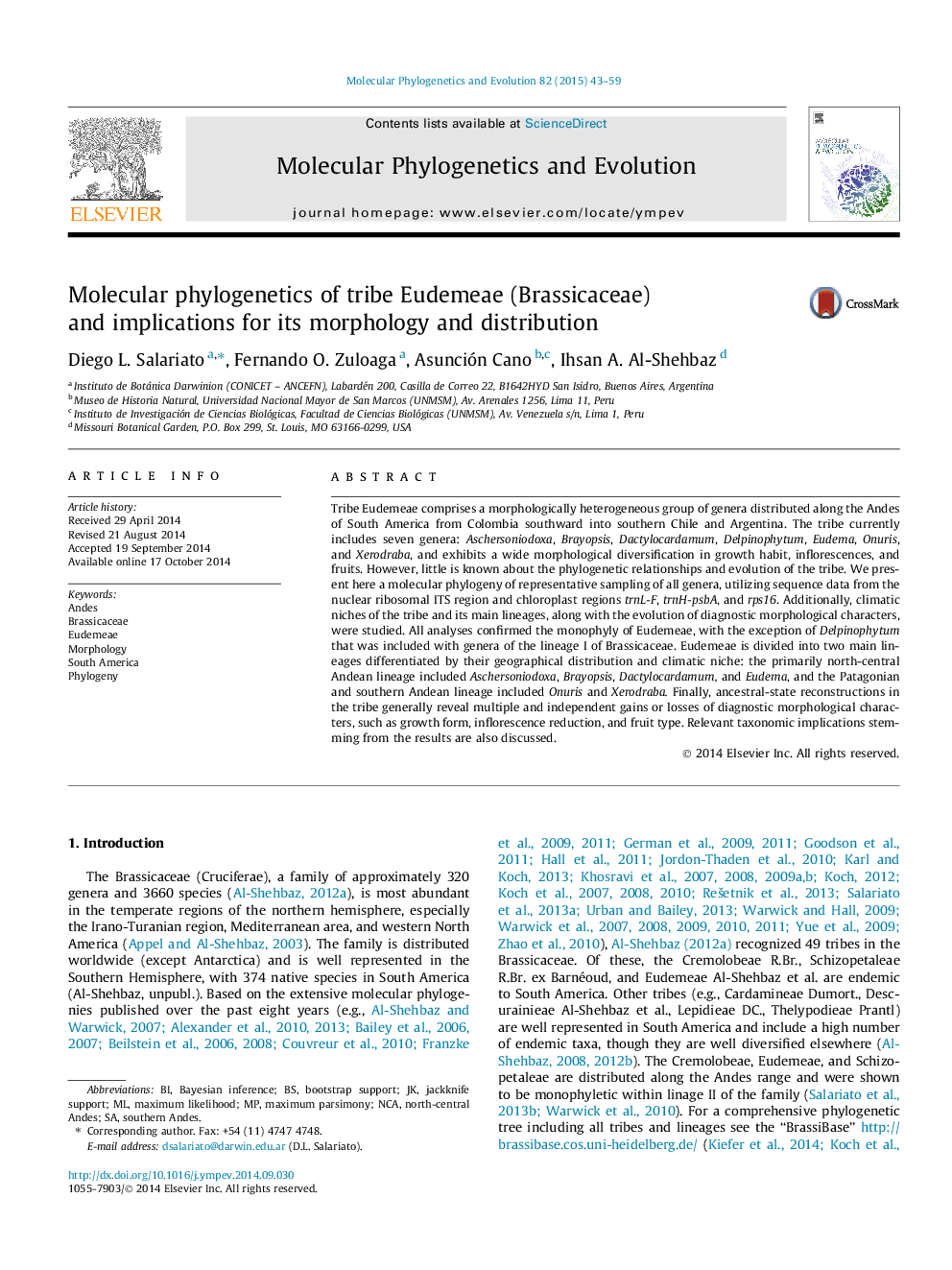| کد مقاله | کد نشریه | سال انتشار | مقاله انگلیسی | نسخه تمام متن |
|---|---|---|---|---|
| 5919008 | 1164256 | 2015 | 17 صفحه PDF | دانلود رایگان |

• Tribe Eudemeae comprises a group of genera distributed along the Andes.
• Phylogenetic analyses included species of all genera and four loci.
• Eudemeae s.str. (excluding Delpinophytum) represents a monophyletic group.
• Two main lineages differentiated in their geographical distribution are present.
• Multiple gains or losses of the diagnostic morphological characters were recovered.
Tribe Eudemeae comprises a morphologically heterogeneous group of genera distributed along the Andes of South America from Colombia southward into southern Chile and Argentina. The tribe currently includes seven genera: Aschersoniodoxa, Brayopsis, Dactylocardamum, Delpinophytum, Eudema, Onuris, and Xerodraba, and exhibits a wide morphological diversification in growth habit, inflorescences, and fruits. However, little is known about the phylogenetic relationships and evolution of the tribe. We present here a molecular phylogeny of representative sampling of all genera, utilizing sequence data from the nuclear ribosomal ITS region and chloroplast regions trnL-F, trnH-psbA, and rps16. Additionally, climatic niches of the tribe and its main lineages, along with the evolution of diagnostic morphological characters, were studied. All analyses confirmed the monophyly of Eudemeae, with the exception of Delpinophytum that was included with genera of the lineage I of Brassicaceae. Eudemeae is divided into two main lineages differentiated by their geographical distribution and climatic niche: the primarily north-central Andean lineage included Aschersoniodoxa, Brayopsis, Dactylocardamum, and Eudema, and the Patagonian and southern Andean lineage included Onuris and Xerodraba. Finally, ancestral-state reconstructions in the tribe generally reveal multiple and independent gains or losses of diagnostic morphological characters, such as growth form, inflorescence reduction, and fruit type. Relevant taxonomic implications stemming from the results are also discussed.
Figure optionsDownload as PowerPoint slide
Journal: Molecular Phylogenetics and Evolution - Volume 82, Part A, January 2015, Pages 43–59